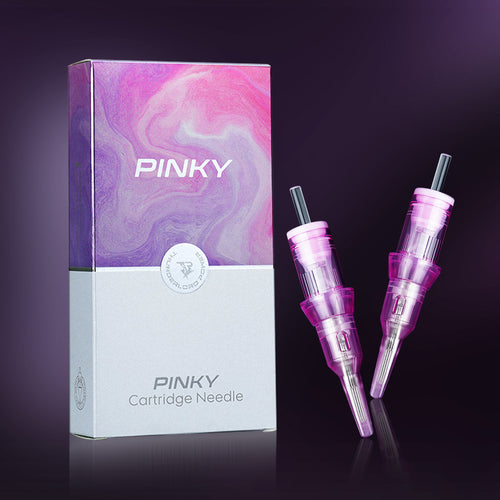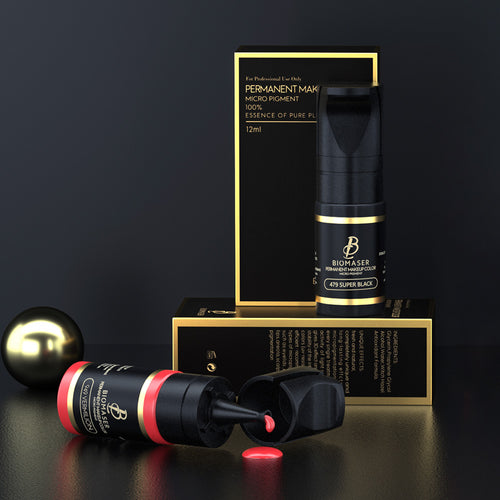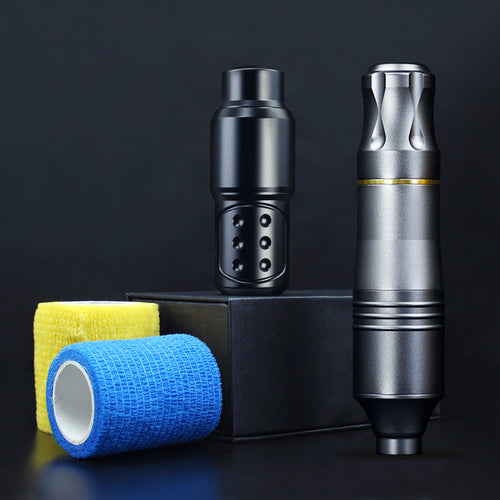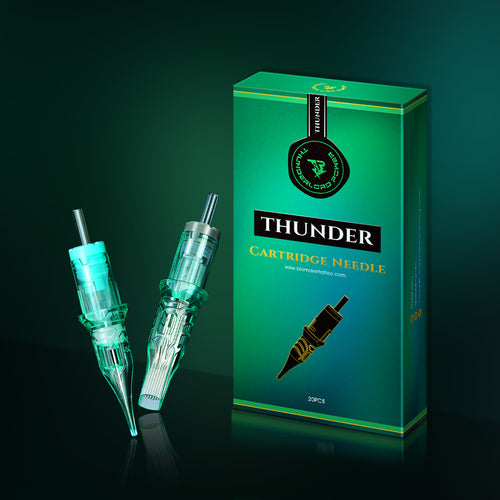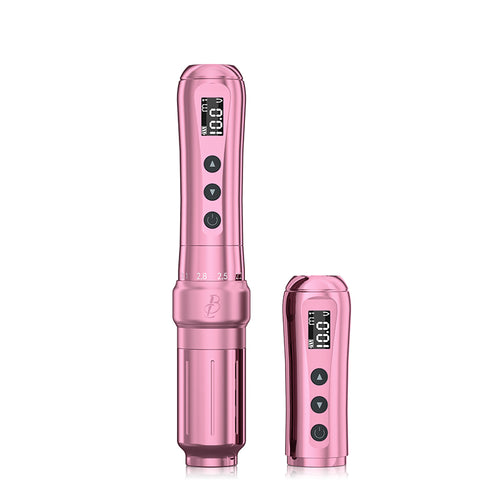De l'esquisse à la peau : comment les aiguilles de tatouage donnent vie à l'art

Depuis l'aube du tatouage, les aiguilles ont été le conduit entre l'esprit et le corps, les messagers qui gravent nos croyances les plus profondes dans la chair. Sans ces outils à pointe fine, les visions nées dans l'esprit des artistes resteraient piégées sur papier, ne pouvant jamais s'exprimer sur la toile de la peau. Rejoignez-moi alors que nous plongeons dans l'anatomie, la sélection et l'entretien de ces instruments magiques qui rendent l'impossible possible - permettant à l'encre de se transformer de concepts abstraits en art concret et vivant.
La Anatomie des Aiguilles de Tatouage - L'Ingénierie des Aiguilles de Tatouage
Les aiguilles de tatouage modernes sont des merveilles d'ingénierie, réglées avec précision pour un travail exigeant précision, contrôle et fiabilité. Alors qu'à l'époque ancienne, les aiguilles étaient sculptées à la main dans l'os, le verre et le bambou, les versions d'aujourd'hui mettent en avant des techniques de métallurgie et de fabrication de pointe.
Lors de la création d'aiguilles de tatouage, les fabricants se concentrent sur plusieurs éléments de conception clés :
Flexibilité du matériau : Les aiguilles doivent avoir suffisamment de ressort et de flexibilité pour répondre à la pression de la main et au mouvement de la peau sans se casser. Les métaux de qualité chirurgicale comme l'acier inoxydable offrent l'équilibre parfait.
Aiguisement du point : La pointe doit se rétrécir en un point super fin pour percer la peau proprement et déposer l'encre avec précision dans la couche dermique.
Diamètre et Longueur : Les aiguilles se déclinent en plusieurs diamètres, allant des liners fins de 0,12 mm aux shaders magnum épais de 0,55 mm. Les longueurs varient également, allant de 25 mm pour les ongles à 75 mm pour les crayons.
Tip Shape: Les formes de point rondes, plates, courbées et effilées créent différents effets de saturation d'encre. Certaines aiguilles combinent des formes en une seule pointe.
Groupes d'aiguilles : Plusieurs aiguilles peuvent être soudées ensemble en pointes groupées. Plus d'aiguilles dans une pointe permettent un meilleur flux d'encre.
contrôlant soigneusement ces facteurs de conception, les fabricants d'aiguilles permettent aux artistes tatoueurs d'avoir les outils nécessaires pour apporter précision, personnalité et créativité à leurs toiles vivantes.
Techniques de machine à tatouer - La puissance qui donne vie aux aiguilles
Les machines à tatouer sont les centrales qui manipulent les aiguilles pour injecter de l'encre dans la peau avec une précision artistique. Deux types principaux fonctionnent de différentes manières :
Machines à bobines
Les machines à bobines utilisent des bobines électromagnétiques pour faire monter et descendre rapidement l'aiguille. Le nombre de tours de bobine influence la puissance et la vitesse de la machine. Ces machines produisent un son caractéristique de bourdonnement pendant leur fonctionnement. Elles nécessitent plus d'entretien que les machines rotatives.
Machines Rotatives
Les machines rotatives s'appuient sur un moteur électrique et un arbre d'entraînement pour propulser l'aiguille dans un mouvement circulaire fluide. Cela crée un mouvement d'aiguille plus silencieux et plus doux par rapport aux machines à bobine. Les machines à tatouer rotatives ont également tendance à être plus légères que les machines à bobine et nécessitent moins d'entretien fréquent.
Facteurs Critiques dans les Machines à Tatouer
Lors de la sélection d'une machine à tatouer, les réglages de vitesse ajustables permettent à l'artiste de contrôler le taux d'impact des aiguilles. Des vitesses plus rapides fonctionnent bien pour les contours de tatouage, tandis que des vitesses plus lentes permettent un travail d'ombrage délicat. La profondeur de course varie également entre les machines, certaines permettant des courses plus longues pour déposer plus d'encre pour une saturation vive.
Un autre facteur clé est la conception de la prise de la machine. Étant donné que les séances de tatouage peuvent durer plusieurs heures, une prise confortable et antidérapante permet à l'artiste de maintenir la précision et le contrôle sans fatigue des mains. De nombreuses machines sont également équipées d'une pédale pour permettre un fonctionnement pratique sans les mains.
Choisir et régler la bonne machine permet aux artistes de donner vie aux aiguilles de la manière précise nécessaire pour créer les tatouages souhaités. C'est à la fois de l'art et de la technologie synthétisés.

Types d'aiguilles - Offrez des choix à l'artiste
Les tatoueurs ont différents types d'aiguilles parmi lesquels choisir, et chacune crée des effets artistiques différents.
- Aiguilles de contour Caractéristiques des pointes rondes pour le travail de contour et les lignes fines et délicates. Leur diamètre mince permet une précision.
- Aiguilles de shader ont des pointes plates qui dispersent largement l'encre pour remplir et colorer de plus grandes zones. Leur large surface imprègne efficacement la peau.
- Magnum aiguilles offrir des embouts longs supplémentaires et de grands diamètres pour couvrir des zones vastes pour des travaux à grande échelle comme des pièces de dos ou des manches complètes. Leur taille d'embout substantielle dépose plus d'encre.
- Aiguilles courbes ont des pointes rondes effilées pour aider les artistes à réaliser des contours et des dégradés d'ombre. Leur courbure permet une polyvalence.
La sélection des aiguilles prend également en compte des variables telles que le type de peau, l'emplacement du tatouage et le style artistique souhaité. Certaines encres s'associent également mieux à des configurations d'aiguilles particulières. Et chaque artiste a ses propres préférences et techniques qui influencent ses choix.
Avec une variété diversifiée de types d'aiguilles parmi lesquels choisir, les artistes peuvent sélectionner les bons outils pour chaque vision et donner vie à une large gamme de styles artistiques.
Choisir la bonne aiguille pour chaque tatouage
Choisir les aiguilles optimales pour un tatouage nécessite d'évaluer de nombreux facteurs :
Skin type: Le type de peau du client - plus élastique ou plus résistant - interagira différemment avec les aiguilles. L'emplacement du tatouage modifie également l'épaisseur et la sensibilité de la peau. Les artistes choisissent les aiguilles en conséquence.
Conception de l'aiguille : Le design'La taille et le niveau de détail doivent également être pris en compte. Les petits détails nécessitent des aiguilles à liner plus fines, tandis que les pièces de grande taille peuvent nécessiter des groupes d'aiguilles magnum.
Configuration : Le artiste expérimente avec différentes configurations d'aiguilles sur des peaux d'entraînement pour mieux réaliser sa vision artistique. Des regroupements avec plus d'aiguilles offrent une saturation d'encre plus importante.
Tension et puissance de la machine : Les aiguilles doivent être adaptées à la tension et à la puissance de la machine. Essayer différentes combinaisons permet à l'artiste d'ajuster la réactivité de l'outil.
Il faut souvent essayer une variété de types d'aiguilles, de marques, de regroupements et d'associations de machines sur des pièces d'essai avant de se décider sur les bons outils pour donner vie à chaque design de tatouage unique. C'est un processus d'essai et d'expérimentation artistique.
évaluant ces facteurs, les artistes choisissent et calibrent soigneusement les combinaisons d'aiguilles et de machines qui permettront à leurs visions créatives de se matérialiser le plus fidèlement possible sur la peau d'un client.
Prendre soin des aiguilles prolonge leur durée de vie
Le nettoyage et la stérilisation appropriés des aiguilles de tatouage après chaque utilisation sont essentiels pour prolonger la durée de vie des outils et prévenir la contamination.
- Nettoyage approfondi implique de retirer complètement toute l'encre et le sang résiduels et de laver les aiguilles avec un savon antibactérien doux et de l'eau tiède. Cela les prépare pour l'étape de stérilisation suivante.
- Stérilisation efficace nécessite l'utilisation d'une machine à autoclave ou d'un stérilisateur à billes de verre conformément aux instructions du fabricant. Cela garantit que tous les microbes restants sont éliminés avant la prochaine utilisation.
- Stockage approprié des aiguilles cela signifie les conserver dans des sachets ou des conteneurs scellés et stérilisés, à l'abri de l'humidité, des températures extrêmes et des contaminants possibles. Ne pas utiliser si l'emballage est compromis.
- Élimination responsable des aiguilles nécessite de placer les aiguilles usagées dans des conteneurs de déchets tranchants approuvés. Réutiliser les aiguilles de tatouage est dangereux en raison des risques d'infection. Les lois sur l'élimination varient selon les régions.
Avec des procédures de nettoyage appropriées, la stérilisation, un stockage soigneux et une élimination responsable - les artistes tatoueurs peuvent profiter de la durée de vie complète de leurs aiguilles de haute qualité. Cela permet d'économiser de l'argent tout en protégeant les clients.
Conclusion
Sans aiguilles, les tatouages seraient des images abstraites - piégées éternellement sur papier au lieu d'émerger de manière vibrante sur la peau. Ces outils à pointe métallique rendent l'impossible possible, l'imaginé réel. Les aiguilles de tatouage sont les conduits qui guident l'encre sous notre surface et manifestent des fantasmes cachés. Nos croyances les plus intimes mises en chair commencent et se terminent à la pointe.




